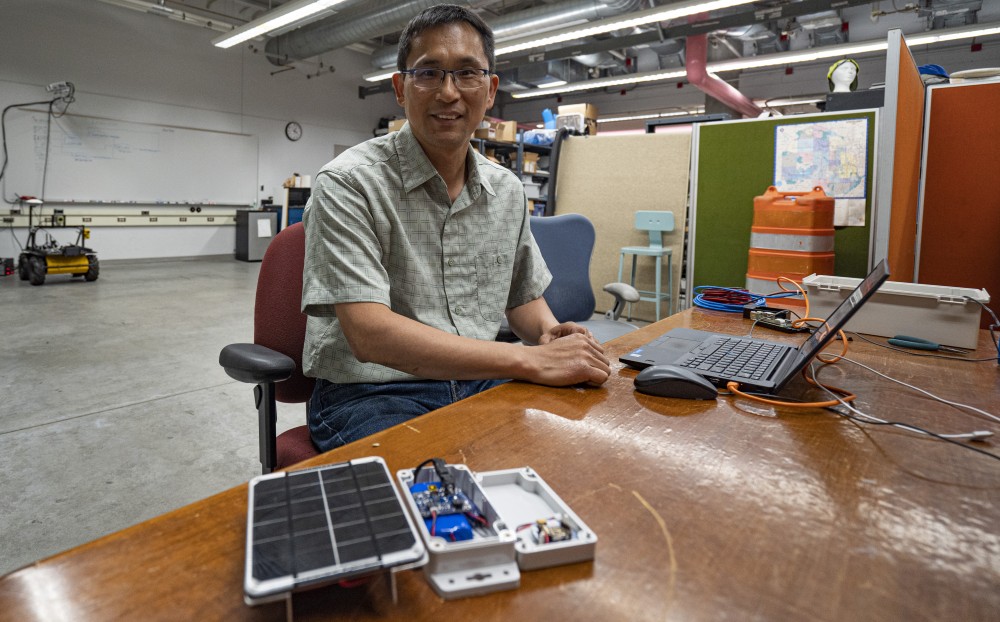A University of Minnesota researcher is trying to make streets safer for the visually impaired.
Chen-Fu Liao, a researcher at the Center for Transportation Studies, is working to create an app that uses a Bluetooth system to help visually impaired pedestrians navigate city streets. Liao will be putting his work to the test in Stillwater this fall by installing the Bluetooth software at multiple intersections. He will begin the installations in the next several weeks.
Liao previously developed a signal that uses smartphone technology to send location and signal timing information to a pedestrian using a GPS signal, but he has found that GPS technology is not always reliable, which led him to work on the new system.

On his new project, Liao has created a system using Bluetooth beacons which he will install at six intersections around downtown Stillwater. The system will be able to estimate the pedestrian’s location using Bluetooth signals and share that information with nearby devices. The information will be sent to the smartphone app which will provide users with navigation information as they approach an intersection, such as how much longer they have to cross the street and if there are any obstacles in their way.
“We want to be sure the system is providing reliable and accurate information at the intersections to the general public that is accessible to all …. We want to see how this can be useful for people,” he said.
Liao has also received funding and assistance from the Minnesota Department of Transportation, which is sponsoring this two-year program that began last year.
“We thought it was a good project with innovative ideas that we hope will benefit the visually-impaired community,” said Mike Fairbanks, signal operations engineer at MnDOT and the technical lead on the project.
MnDOT selected Stillwater as the testing site because it has many pedestrians and vehicles, especially on the weekends, Fairbanks said.
“Stillwater is an urban environment with sufficient pedestrian traffic. Ideally, we’ll later be able to test at a bigger scale in downtown Minneapolis or St. Paul,” Liao said.
The system is currently targeted towards the visually impaired, but Liao said he can see it potentially helping the elderly and those with disabilities in the future.
“With a more personalized solution, we feel that it could be integrated into the future transportation systems and applications that will allow users to to get this information more seamlessly,” Liao said. “It will bring people more accessible and more integrated information without having them navigate through multiple steps to find the information they need.”

Gordon Legge, a University psychology professor who is visually impaired, said mobility is a challenge that many with a visual impairment face.
“If you’re visually impaired, one of the biggest issues you have is getting around, from ensuring your safety in crossing streets and avoiding steps, to planning your route,” he said.
But Legge, who is familiar with Liao’s research, said technology has been helpful to members of the visually impaired community.
“Modern mobile technology and apps have been proven to be very valuable for people who are visually impaired, and [Liao] is a contributor to that,” he said.








